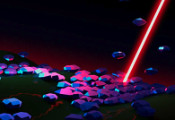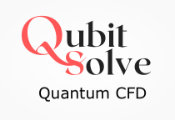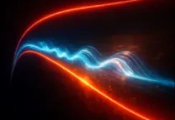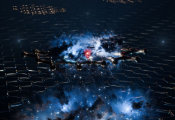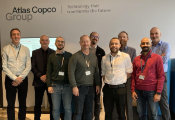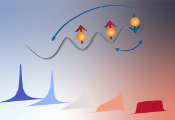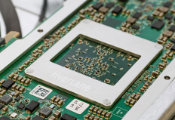Defined as the Smallest Amount of Something That a Thing Can Possess, the Potential of Quantum Is Anything but Small. It’s Vast, and Imperial Is Setting the Rules
According to some unnecessarily gloomy reports, this year marks the setting in of a quantum winter – the point at which investors officially give up on making a usable quantum computer. And you can see their point. The best quantum computers we have today can do something in the order of 100 operations before failing – usually as a result of ‘noise’ such as heat, electronic signals or magnetic fields – and that’s when they are operated in a cryogenic chamber kept close to the absolute zero of temperature.
But as the researchers at the Centre for Quantum Engineering, Science and Technology (QuEST) point out, the potential of quantum technologies is… epic. Indeed so epic that most governments are far more worried about who will get to a quantum age first than how long it will take to get there.
The reality is that quantum computing has the potential to revolutionise heavily demanding information processing in science and industry. It offers the tantalising prospect of near-unlimited processing capability, harnessing the power of quantum bits, or qubits. For, unlike the bits of classical computers, the power of a quantum computer grows exponentially with the number of qubits.
“Quantum computers aren’t any good for general purpose tasks; you can’t run Microsoft Excel on a quantum computer, for example,” says Professor Peter Haynes, Director of QuEST. “Yet they should be outstanding at some specific tasks that classical computers find extraordinarily difficult to do, such as the travelling salesman problem [the classic optimisation challenge in computer science that seeks to find the shortest possible route that visits every point in a set of locations just once].”
But quantum computers face a problem – they are billions of times more prone to errors than their classical counterparts, due to sensitivity to noise from their environment and small fluctuations in their operating conditions. To address this problem, Professor Myungshik Kim’s current area of research focuses on the development of quantum algorithms for error correction and mitigation. “These fundamental and technical errors must be removed completely for a quantum computer to be useful for computation in finance, in weather forecasting or drug design,” he says. “I’m optimistic we will solve the problem.”
QuEST’s work on molecules may also help in the development of error-resistant quantum computers, says Dr Jessica Wade, Lecturer in Functional Materials. “Molecules give you protection against lots of those challenges because they can demonstrate tunable quantum phenomena at room temperature, and quantum information can be encoded onto their excited states,” she says. “Using molecules lowers the cost and the environmental impact. They are inherently scalable, because every time you make a molecule, they are exactly the same as all the others.”
Quantum computers may have garnered all the headlines but if it all sounds impossibly theoretical, there are many other practical applications of quantum technologies that have the potential to change our world. And QuEST is well placed to ride this wave(-particle) of innovation. “It’s becoming very important to make sure that quantum technologies are delivered to the market,” says Kim. Haynes adds: “Most engineers may not consider themselves to be experts in quantum, but it turns out they have lots of relevant expertise. Imperial, with its strength in science and engineering, is well placed to bring those things together.”
Take Dr Joseph Cotter’s work on quantum navigation, which offers a tantalising view of what can be achieved through leveraging quantum technologies. Most of us take for granted being able to find out exactly where we are, thanks to GPS. Yet for many applications, using GPS is either impossible or not permitted for security and safety reasons. “These days, we are incredibly dependent on GPS positioning,” says Cotter, an EPSRC Quantum Technology Fellow. “Yet GPS doesn’t work underground or underwater and it is easy to spoof.” So Cotter’s team is developing a new quantum sensor, an innovative type of accelerometer which measures how an object’s speed changes over time. By combining this information with rotation measurements and the initial position of the object, the current location can be calculated.
Conventional accelerometers are used in many devices, including mobile phones and laptops, but these sensors cannot maintain their accuracy over longer periods of time without external reference. The quantum accelerometer uses ultra-cold atoms of rubidium-87 to make highly accurate measurements. This approach reduces or eliminates the ‘drift’ so common to traditional positioning systems, where a device cannot accurately determine or track an object’s position over long periods of time. One application of Cotter’s work is a proof-of-concept for locating Tube trains on the London Underground. Cotter’s team has managed to condense a table full of lasers and two giant racks of electronics at Imperial’s Blackett Laboratory into a washing machine-sized box that can fit on board. The team has also carried out trials of the system with the Royal Navy, exploring ways to make ships’ navigation systems less susceptible to jamming, imitation or other sabotage.
Like all technologies, new quantum devices rely critically upon materials, both at the heart of the quantum system and also in the surrounding infrastructure. That’s where Professor Sandrine Heutz’s work on the quantum properties of carefully chosen molecular systems comes in. Their usefulness comes from a property of electrons known as spin, a measure of their intrinsic angular momentum. This spin can be characterised as being either up or down. “Those spins can be used as quantum bits of information,” says Heutz. This is analogous to the zeroes and ones of digital computing. The exciting part is that this spin state can be both controlled and measured by external triggers, such as electric and magnetic fields.
One such material is NV diamond, where a single carbon atom adjacent to a vacancy in the diamond lattice is replaced by nitrogen. As well as giving the diamond a characteristic hue, it also allows the spin direction to be nudged into one direction or the other using radiation. Imperial’s state-of the-art fabrication and characterisation facilities, including cryo-electron and scanning probe microscopies, is particularly useful to combine materials and enhance quantum properties. “The study of interfaces between materials opens up avenues to create new functionalities,” says Heutz. “It is also crucial in the development of optimised quantum devices and to combine the benefits of mature and emerging materials platforms.”
Meanwhile, QuEST’s Professor Riccardo Sapienza specialises in nanophotonics, the science of controlling light in matter at the nanometre scale that has been subtly altered by adding particles or drilling holes. “These metamaterials have new properties that depend on the way we structure them,” says Sapienza. “In this way we can enhance light and matter interaction, similarly to a violin boosting the sound waves it emits.” Two centuries ago, the quantum era was ushered in by the famous double-slit experiment, which showed that light acts as a wave. (Further experiments, however, showed that light actually behaves as both a wave and as particles – revealing its quantum nature.) Now one of Sapienza’s most exciting projects has identified metamaterials which reveal a similar effect not just in space but also in time.
“With these we have shown a temporal double-slit interference effect, where a photon is reflected at different times, and the light detected is the interference of these two reflections, one in the past and one in the future,” says Sapienza. Such ‘time-varying metamaterials’ could have several applications, including very fast optical switches for signal processing and communication or reconfigurable components for optical computing.
It’s more than a century since scientists such as Planck, Heisenberg and Schrödinger introduced us to the weird world of quantum mechanics, a world in which things can be both particles and waves, where objects no longer exist in precisely defined locations and where cats can be alive and dead at the same time. Since then, quantum mechanics has become one of the most tested and trusted theories in history. Now the race is on among scientists, engineers, technologists, companies and governments to harness the power across the range of quantum technologies.

